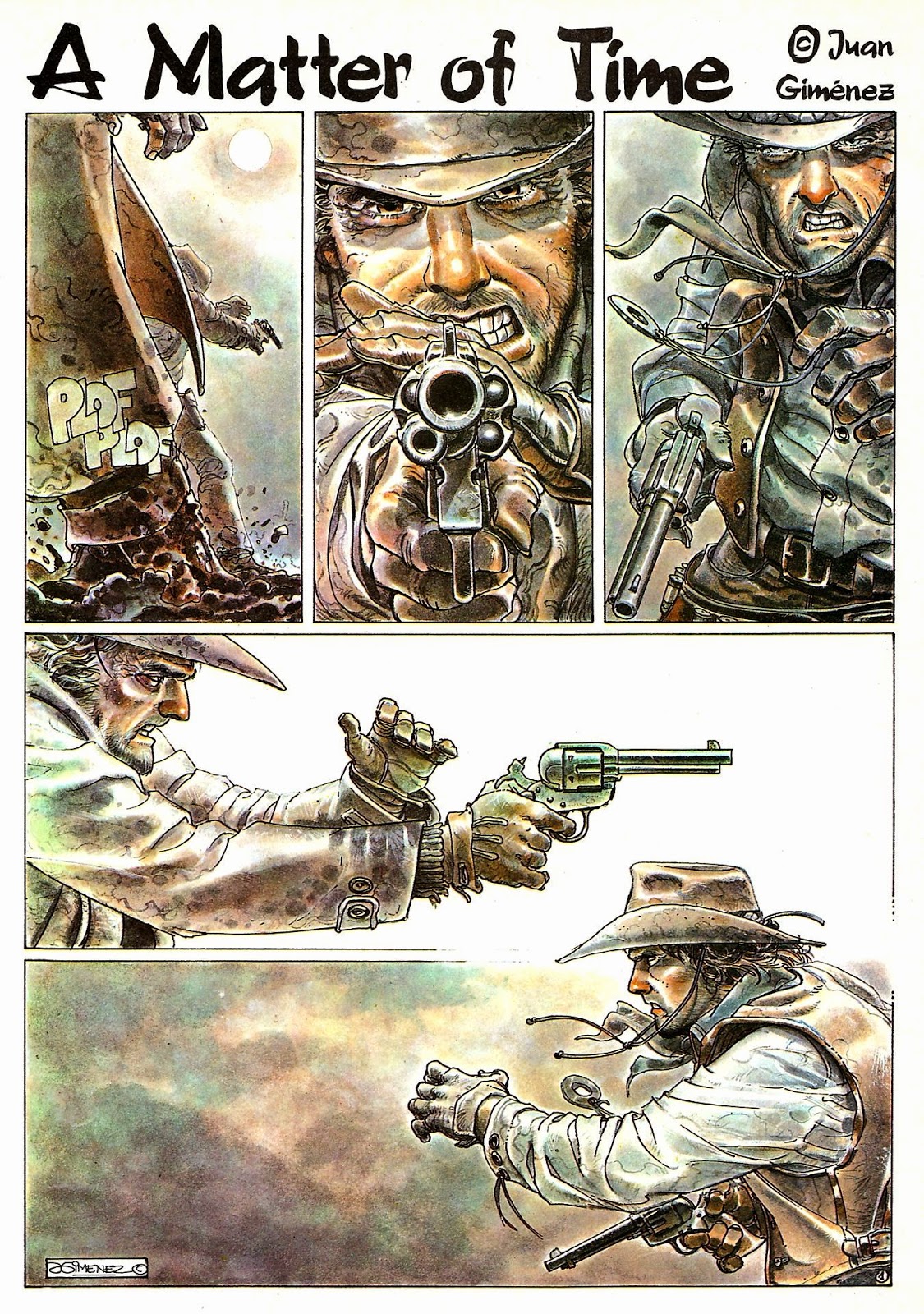by Jean Pierre Dionnet and Enki Bilal
'Exterminator 17' first was serialized in the French magazine
Metal Hurlant in 1976 - 1977. An English translation, in black and white, was serialized in Heavy Metal, starting with the October,
1978 issue and continuing through the March, 1979 issue.
This 1986 Catalan Communications trade paperback compiles
all of those English-language episodes, in a color format (done by Dave Brown). Humanoids published
a hardcover edition in 2002. Dionnet went on to release a three-volume sequel, titled La Trilogy D’Ellis ('The Ellis Trilogy'), with illustrations by Igor Baranko, that was published in France from 2003 - 2008. An English-language compilation of Exterminator 17 and the entire Ellis Trilogy was issued by Titan Comics in 2018.
When I picked up and read my very first issue of Heavy Metal
in November, 1978, it was my first introduction to European styles of comic
book artwork, and I found 'Exterminator 17' to be one of the most offbeat such
comics I’d ever seen.
This mainly was due to Bilal's artwork, which was extremely detailed and meticulous, but at the same time, distinctive in its sensibility. The festoonings and graticules and linework gave each image a cluttered, 'organic' quality, while the incorporation of stains, blotches, chips, gouges and smears on the bulkheads of the spaceships, and the clothing of the characters, added a visual element of decay and entropy - things simply not encountered in American comic book art.
Bilal's rendering of human faces and features was also novel and imaginative....an outstanding example is the unscrupulous plastic surgeon surgeon aboard the 'genetic probe ship' :
The plot of 'Exterminator 17' also has its own offbeat sensibility that meshes well with the artwork (although in its later stages, the narrative undergoes some confusing jumps and shifts that suggest that somewhere along the way, some pages were dropped from final production).
The eponymous Exterminator is a member of an army of combat androids; these armies were created as proxies for settling disputes between rival political blocs. As the comic book opens, the army to which Exterminator 17 belongs has been deployed to the planetoid Novack for a battle with another android army.
Barely have the rival armies engaged, however, when the dispute is settled by distant negotiations. A built-in 'kill switch' instantly renders all the combatants 'deactivated'.
But as it turns out, the creator of the androids is himself near death. And before he succumbs, his conscience leads him to take an unprecedented step towards freeing the androids.....and the vehicle of this freedom will be Exterminator 17.
I won't disclose any spoilers, save to say that Exterminator 17 embarks on a journey to the stranger realms of the galaxy, and not everyone he meets is trustworthy.....
Summing up, if you're a fan of Metal Hurlant and Heavy Metal, and / or European sf comics, then getting a copy of the 'Exterminator 17' graphic novel is a worthy investment. I recommend the 2018 Titan Comics volume, as it includes the Ellis Trilogy.
























































































